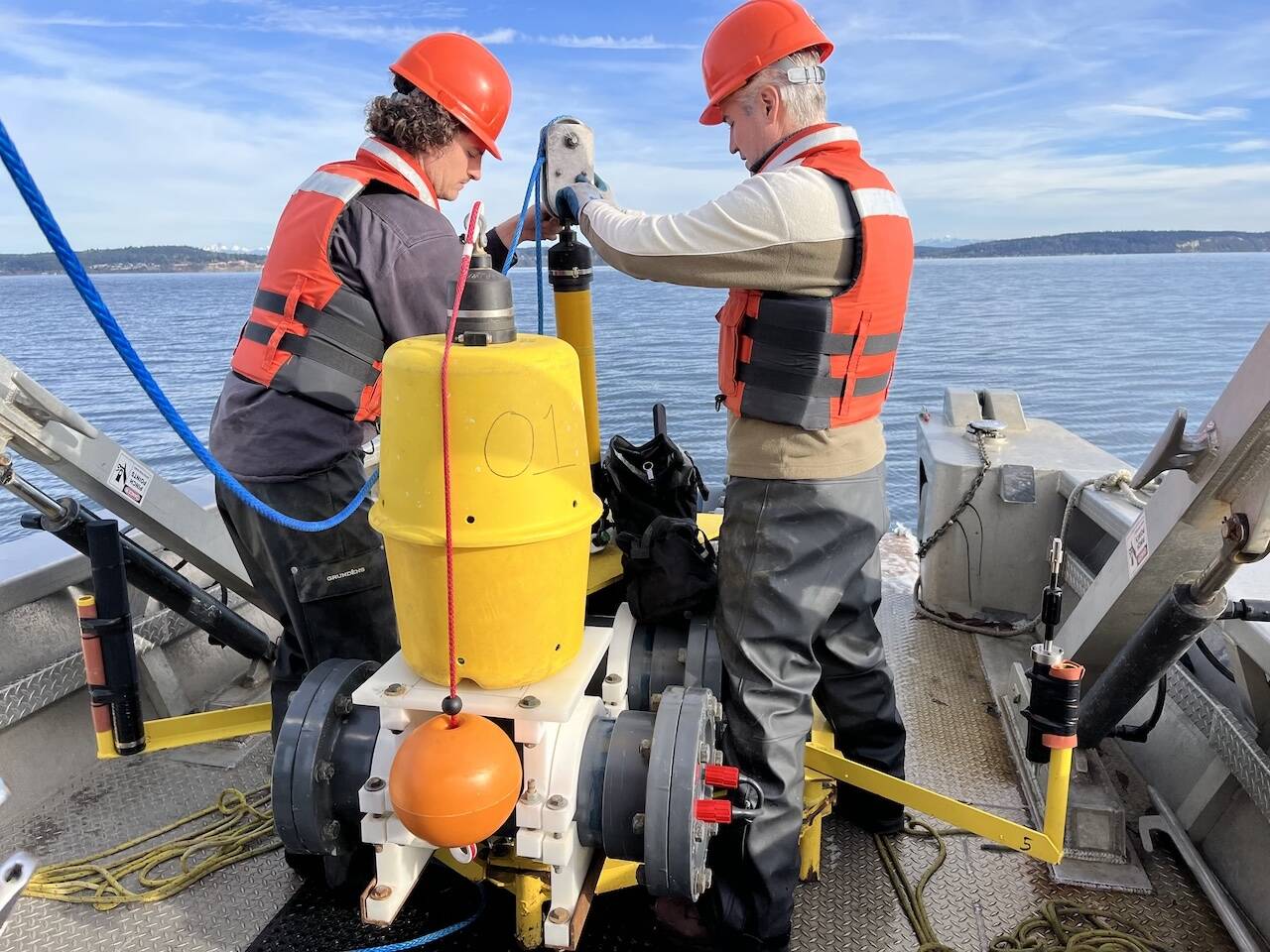EVERETT — Noise pollution from large commercial vessels is a significant threat to southern resident orcas who reside in Puget Sound throughout the winter.
But according to Rachel Aronson, program director for Quiet Sound, crew members cut their noise pollution by almost half when they reduce ship speed by 30% to 50%.
A device dropped into Useless Bay off Whidbey Island this week will collect data over the next three months as ships pass by, providing insight on how reducing speed can help local orcas.
Aronson and a team of scientists from SMRU Consulting launched from the Port of Everett on Monday morning for a hydrophone deployment mission, which took about six hours. The team assembled the device on the boat before heading to the drop site, using equipment to lift the 1,000-pound system off the deck and release it in the water.
The hydrophone’s setup sort of looks like a moon lander, but for the ocean, said Jason Wood, managing director for SMRU. In addition to the actual hydrophone, there is a current meter measuring the speed of water flowing by and a row of three large, gray cylinders that include batteries and a computer,
The Quiet Sound program started after Gov. Jay Inslee formed the Southern Resident Orca Task Force in 2018 to develop proposals for orca recovery.
Orcas use echolocation to communicate and find food, often using the same frequencies that come from large vessels traveling at high speeds. Only 75 southern resident orcas remain in the wild, according to experts. The population of their preferred food, Chinook salmon, has dwindled as the human population in the Pacific Northwest has boomed.
“When you have an endangered species that’s hunting for another endangered species, they’re not going to have that many hunting opportunities,” Aronson said. “When we make it quieter in the water, we give them the best opportunities possible.”
That’s why the governor’s task force recommended creating a program that engaged with the maritime industry and encouraged them to reduce their underwater noise.
Aronson said Quiet Sound asks crews of vehicle carriers, cruise ships, container vessels — anything the size of ferries or bigger — to drop their speed to 11 or 14½ knots when traveling through Admiralty Inlet to the north end of Puget Sound.
She said her team shares the coordinates of the “slow down” area with mariners through a U.S. Coast Guard website and Puget Sound Pilots, so they know where to reduce speed.
Last year around this time, Quiet Sound collaborated with SMRU Consulting to conduct a trial hydrophone launch. The device sat at the bottom of the ocean for eight weeks. During that stretch, 70% of the ships that passed through voluntarily reduced their speed. Aronson said the team noticed a 48% reduction in noise intensity.
“This year,” Aronson said, “we’re hoping to get a higher rate of participation and see if we get a higher reduction in noise intensity, or if we get about the same amount of reduction of noise intensity for a longer period.”
Aronson expects a report to be released next summer, detailing how the Quiet Sound program reduced noise pollution.
Ta’Leah Van Sistine: 425-339-3460; taleah.vansistine@heraldnet.com; Twitter: @TaLeahRoseV.
Talk to us
> Give us your news tips.
> Send us a letter to the editor.
> More Herald contact information.


























